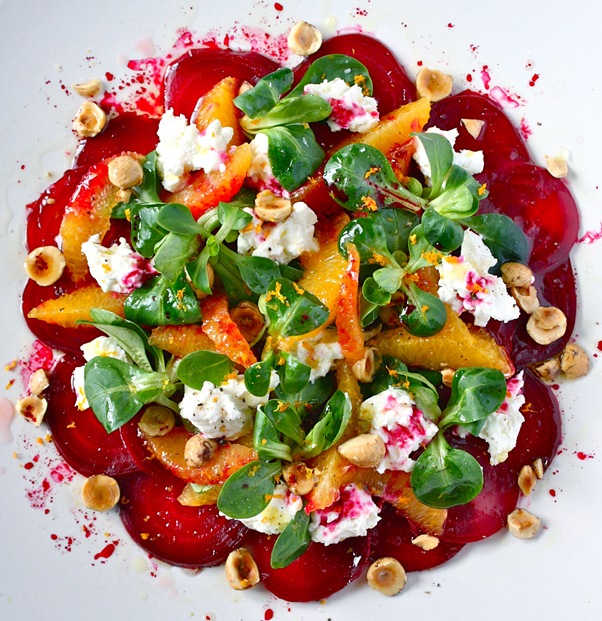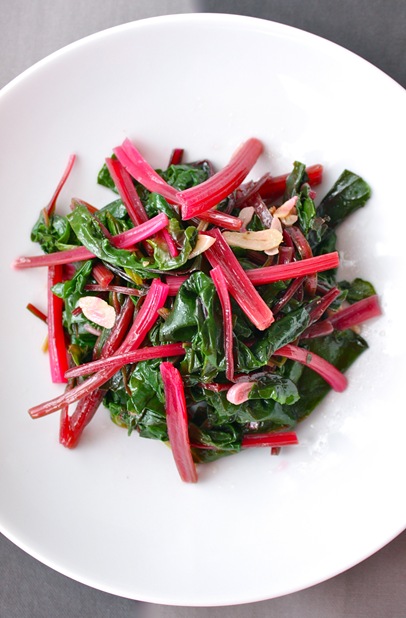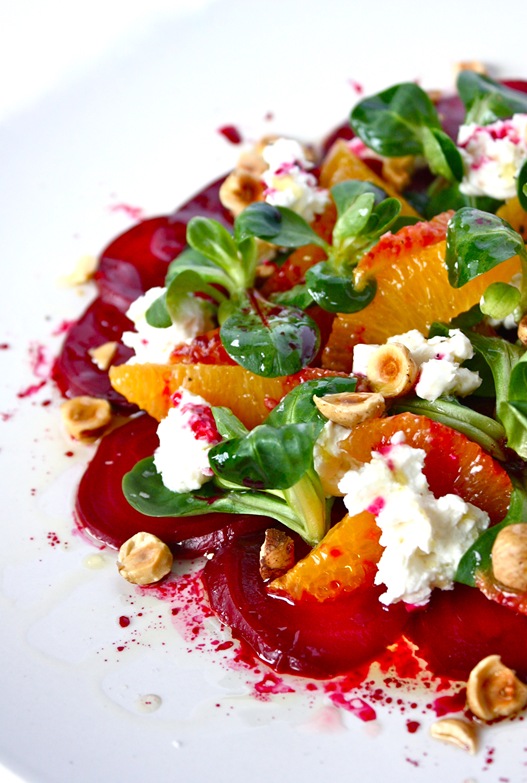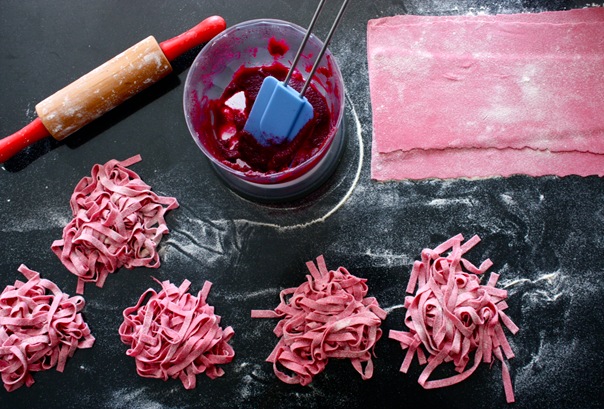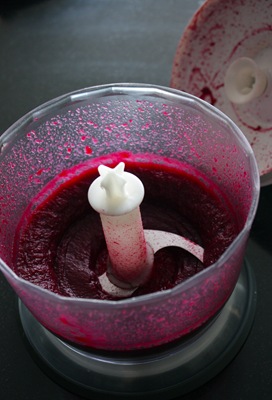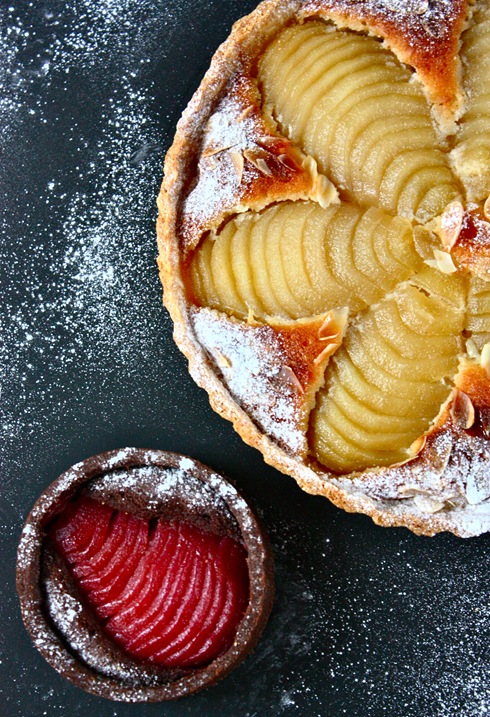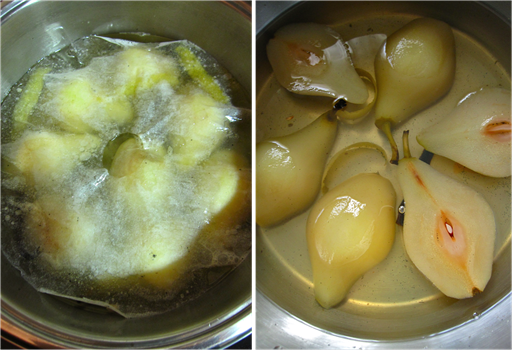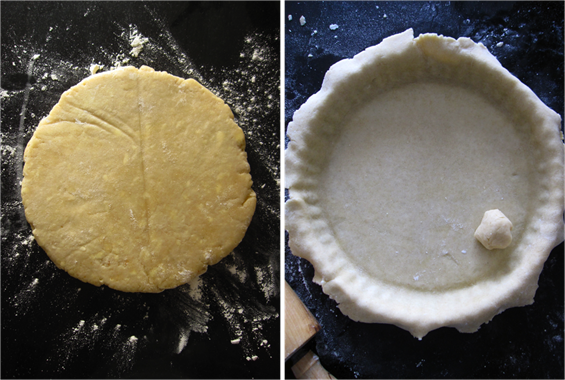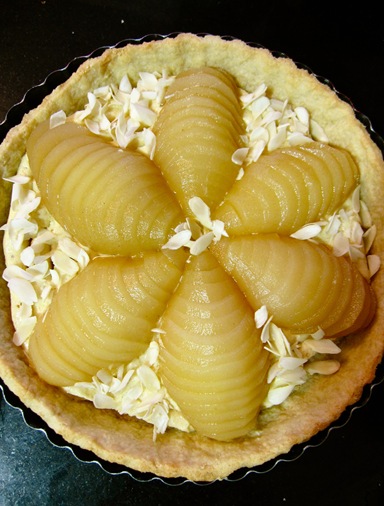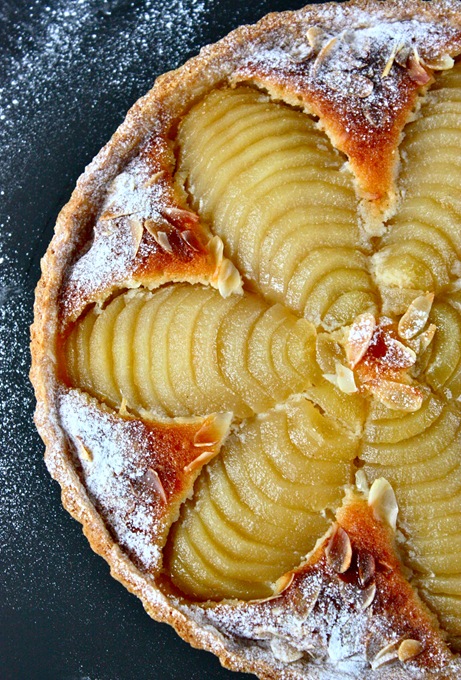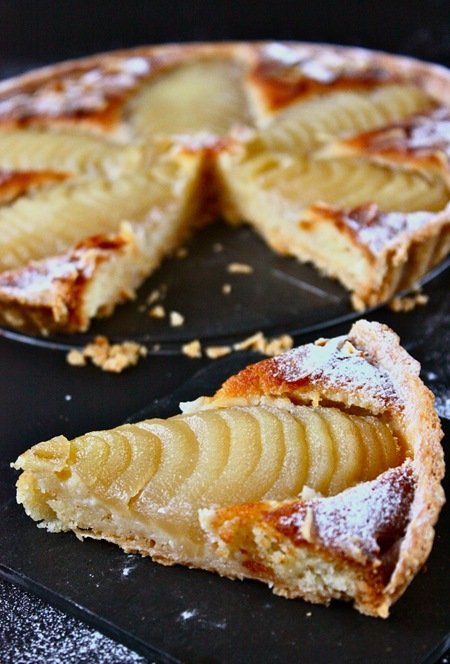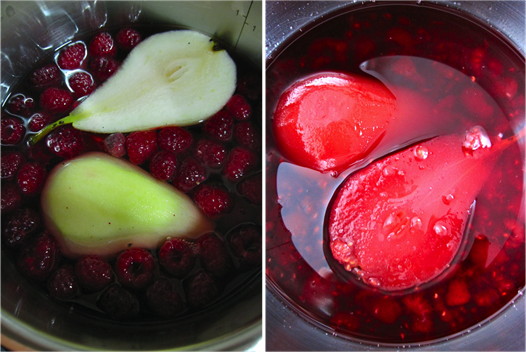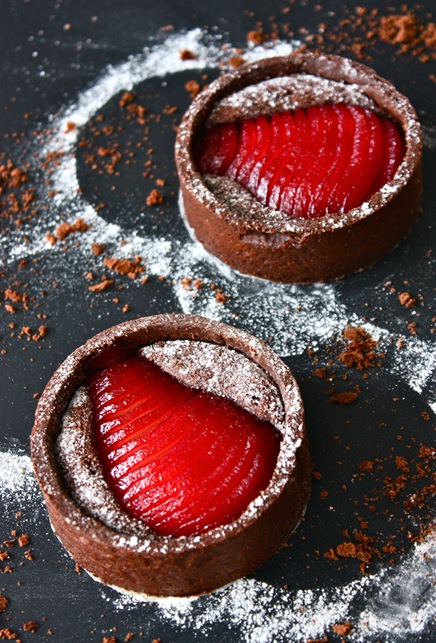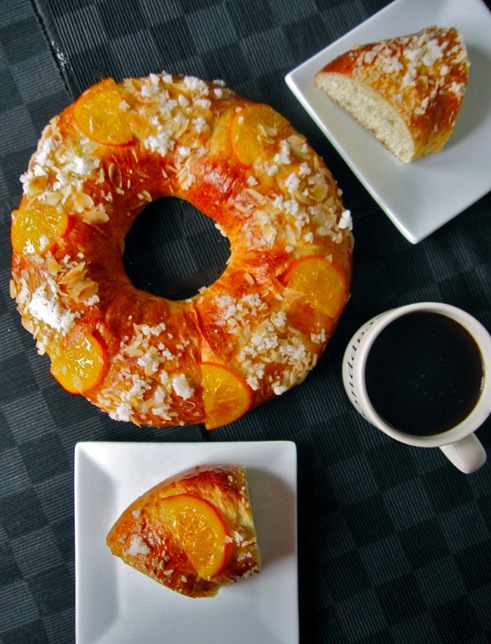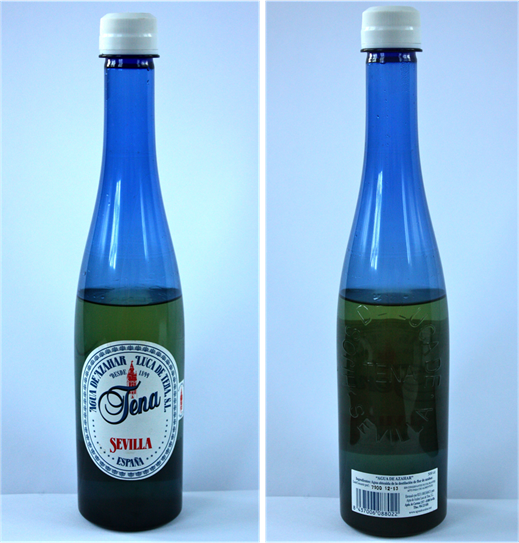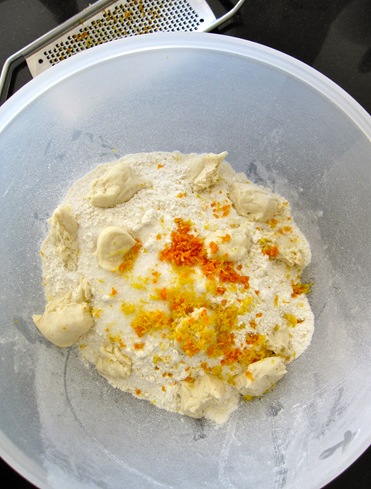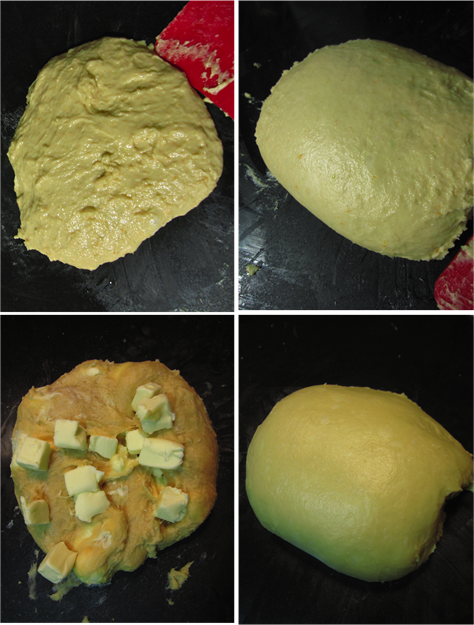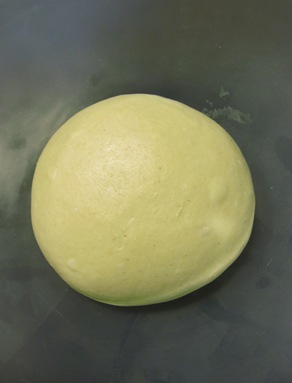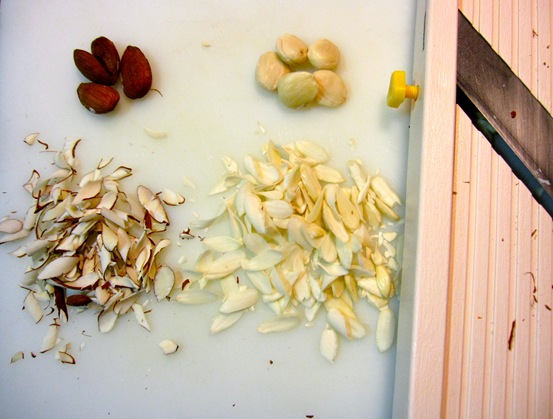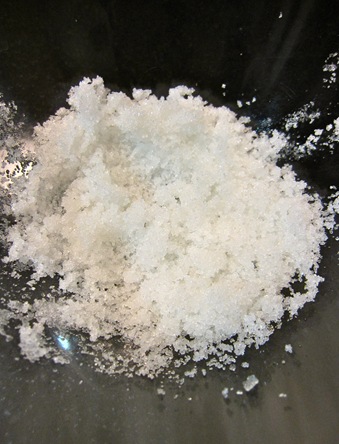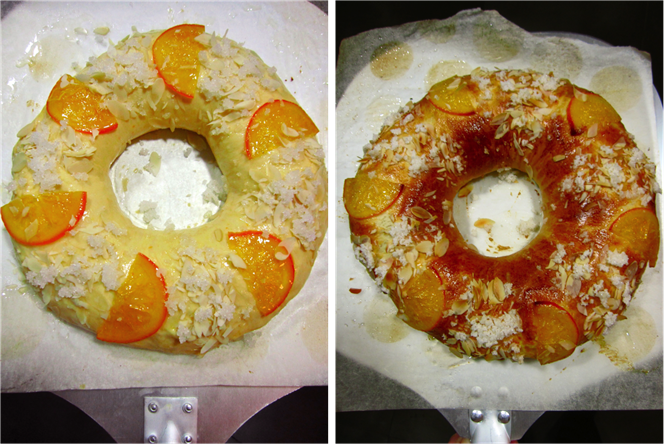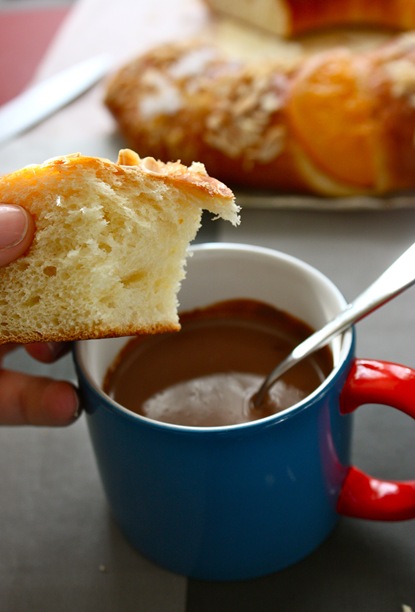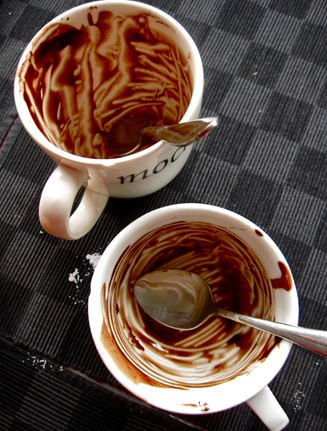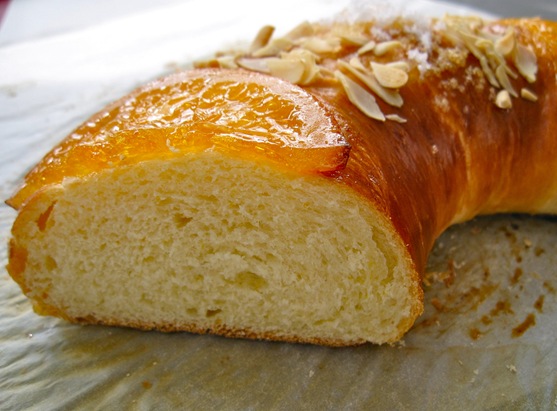It’s been 2 months since I last posted…Reconsidering whether to maintain this blog and if so, how to do it?! I wanted to write both in english and spanish, but already had little time to do so in one language so I was clueless as to how to do it in two. So, after this break and many other new projects happening at once, this is a try to reach a realistic approach to continue posting!
Post have been piling up, as I haven’t stopped cooking and testing recipes, but one of them is this simple salad inspired by a new book by Béatrice Peltre, La Tartine Gourmande: Recipes for inspired life. Béa’s book is a treasure to the eyes, beautiful photography for delicious, honest recipes with simple yet incredibly tasty ingredients. I’ve been a fan of her blog for a while now, precisely for her visual creativity, she has a way to make everything her camera captures utterly beautiful! Her brightly coloured, lively photographs are so captivating, that you wish you could go along with her to the market to pick up those unreal ingredients and cook together…or rather watch her cook those vibrant looking dishes! So, when I received my copy of the book, I knew I wouldn’t be disappointed!!Scrumptious food & images!
In her book, there’s an incredible beetroot millefeuille salad, you can see a photo on her own blog (along with the video presentation of the book) here. It’s so appealing, that although wasn’t a big beetroot fan, I decided to make peace with them, having a go at it. Surprisingly, I’ve undergone a transformation…I have turned into a beetroot junkie!! For 2 weeks I’ve been playing around with those beetroot dishes that appealed to me for the looks but I set aside fed up with those cooked beets sold ubiquitously! But now, beets are my friends and a source of inspiration! Salads, risottos, fresh pasta, soups!They’ve surpassed my expectations, with their bright vibrant, fucshia or red colour (I cannot find here the yellow or stripped varieties) and earthy comforting flavour.
So, this salad feels like a farewell to winter and welcome to spring! The sweet earthy beetroot combines perfectly with the juicy, slightly soury orange, with it’s grated rind( though do try lemon rind, which goes really well too). The creamy mix of soft goat cheese with ricotta mellows the intense flavour and gives a fresher finish; and the crunchy hazelnuts and their oil give a luxurious nutty feel. The greens, lamb’s lettuce is very neutral, so it’s just there to lighten it up and give it colour. Anyway, I can’t find a better way to express how good all ingredients go together and how tasty this salad is! So…just give it a try to see for yourself! Plus, if you get fresh beets (as they go bad really quickly), do use up their stalks and leaves..for a tart or on their own!
Beetroot, orange, hazelnut & goat cheese salad
(for 1 large salad for 2)
2 large beetroots
40g soft goat cheese
40g ricotta (here’s a simple way to make your own!)
a handful of lamb’s lettuce
1/2 a sanguine orange
1/2 an orange*
grated rind of half an orange (or lemon)
maldon salt
20g of toasted hazelnuts (more or less to taste)
3 tbsp of hazelnut or walnut oil**
Freshly milled black pepper
*Or just use a whole orange, instead of half of each.
**I use this brand: Percheron Frères, but I cannot find a page with their cold-pressed oils!
Boil or bake the washed beetroots (I prefer the flavour when baked best). Either way, just make sure you cut about 2cm above where the stalks begin, or the beet will bleed it’s juices into the water or foil paper.
Boiling takes less time, just place the beet in a pot of salted water, bring to a boil and boil until fork tender.
For baking, place each beet onto a piece of aluminum paper large enough to wrap it around, drizzle a bit of olive oil and a sprinkle of salt. Bake at around 190ºC for 40’ to an hour, depending on the size. Since it’s fairly long, if you use this method, it’s worth it to roast some other veg at the same time for another dish!
When not too hot to handle but still warm (as they peel better), peel them, slice fairly thin and reserve.
Mix in a small bowl with a fork the goat cheese with the ricotta, set aside.
Cut the oranges on both top and bottom to expose the flesh. Place it on one end and peel running the paring knife along the shape of the orange to remove skin and white bits. Then cut in between the skin between segments to get the supremes. If you cannot be bothered to do this, just slice the orange! But getting the supremes, leaves you with still some flesh to press out enough juice for the dressing.
To arrange the salad, simply place the beet slices in a circular pattern in the dish, as if it were a capaccio. Then top, here and there with the cheese, the orange segments, lamb’s lettuce leaves and slightly broken or chopped hazelnuts.
Grate some orange/lemon peel on top, sprinkle some maldon or other fleur du sel, some freshly milled pepper and drizzle with the orange juice and nut oil.
If you have leftover beetroot, use it up within 5 days, as it goes bad fairly quickly. If you like to make fresh pasta, it’s great to puree it and substitute it for at least half of the egg in the recipe. The final colour will obviously depend on the colour of the beets, the vivid fucsia ones are best for this for a strong dark colour…otherwise the less intense ones you will get this chewing gum colour :) which I’m sure kids would love, though!
Ensalada de remolacha, naranja, avellanas y queso de cabra
(Para una ensalada generosa para 2 personas)
2 remolachas grandes
40g queso de cabra en rulo, suave
40g ricotta/requesón (aquí una manera fácil de hacerlo en casa!)
un manojo de canónigos
1/2 naranja sanguina
1/2 naranja
la ralladura de media naranja (o limón)
sal tipo maldon (flor de sal)
20g de avellanas tostadas(más o menos, al gusto)
3 cucharadas de aceite de avellanas o nueces
Pimienta negra recién molida
*Podeis usar una naranja y olvidaros de la sanguina.
**Yo uso esta marca: Percheron Frères, que distribuye Antonio de Miguel (muydemiguel para particulares).
Lo principal es cocer o asar las berenjenas. A mi particularmente, me gustan más asadas, quedan con un sabor más intenso, más dulce, pero tardan más, así que os decidís por encender el horno, compensa asar alguna otra verdura para amortizar el gasto!
De cualquier modo, se han de lavar, para retirar la tierra y cortar por encima del comienzo del tallo, porque sino sangran al cocer o asar y pierden jugos. Para cocer, como las patatas, cubrir de agua con algo de sal en un cazo, llevar a ebullición y pinchar a los 20 minutos para ver si estan tiernas.
Si se asan, se cortan 2 trozos de albal suficientemente grandes para envolver cada una, se colocan encima, se echa un chorrito de aceite y sal y se cierran los paquetes. Se meten en un horno precalentado a 190ºC durante unos 40 minutos a 1 hora (dependerá del tamaño de las remolachas)
Se pelan mejor aún calientes, sin abrasarse los dedos, claro. Se cortan en rodajas final y se reservan.
Entre tanto preparamos la mezcla de quesos, uniendo los dos aplastando con un tenedor hasta obtener una crema homogenea.
Preparamos las supremas de naranjas, dando dos cortes a la naranja en ambos extremos dejando expuesta la pulpa. Se apoya sobre la base y se corta la piel con una puntilla de arriba a abajo, siguiendo el contorno de la naranja retirando todo lo blanco. Así se entreverán los gajos limpios y solo queda cortar entre la piel de los segmentos. Lo que queda se presionará para extraer el jugo para el aliño. Así que no se desaprovecha nada!
Sólo queda montar la ensalada, colocando las rodajas de remolacha como base cubriendo el plato en circulos concéntricos, como un carpaccio. Luego distribuyendo cucharaditas de queso, los segmentos de naranja, los canónigos y avellanas ligeramente rotas al gusto por toda la superficie.
Se sazona con la sal maldon, la pimienta recién molida y rallando la piel de naranja o limón por toda la superficie y se aliña exprimiendo lo que queda de la naranja y con un chorrito del aceite de avellanas o nueces.
Si os gusta preparar pasta fresca en casa, normalmente 1 huevo por cada 100g de harina (o mezcla de harina y semola) se le puede dar color, sustituyendo al menos la mitad del huevo por puré de la remolacha cocida que os quede! Dependiendo del tipo de remolacha os quedará un color más intenso tipo fucsia oscuro o rosa chicle como me pasó a mí con la segunda tanda de remolachas más rojizas! Supongo que al gusto de niños…no tanto de mayores!:)
Y si conseguís remolachas frescas, con las pencas y hojas presentables, aprovechar para cocerlas como si fuesen acelgas, para aprovecharlas solas salteadas o para alguna quiche o tortilla. Quedan con un color rosa radioctivo precioso! Y vistas así, las “acelgas” entran mejor! Qué aproveche!

